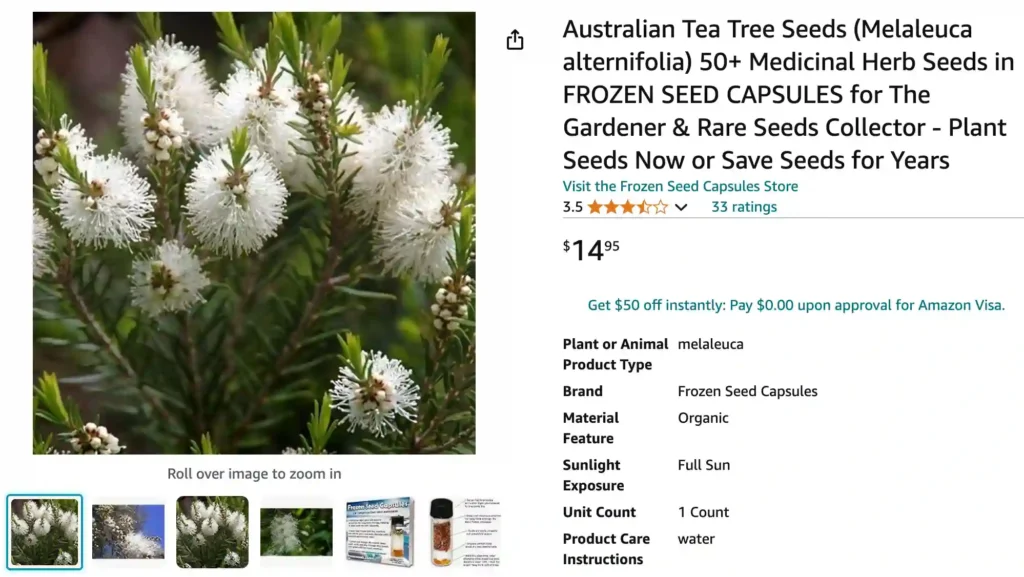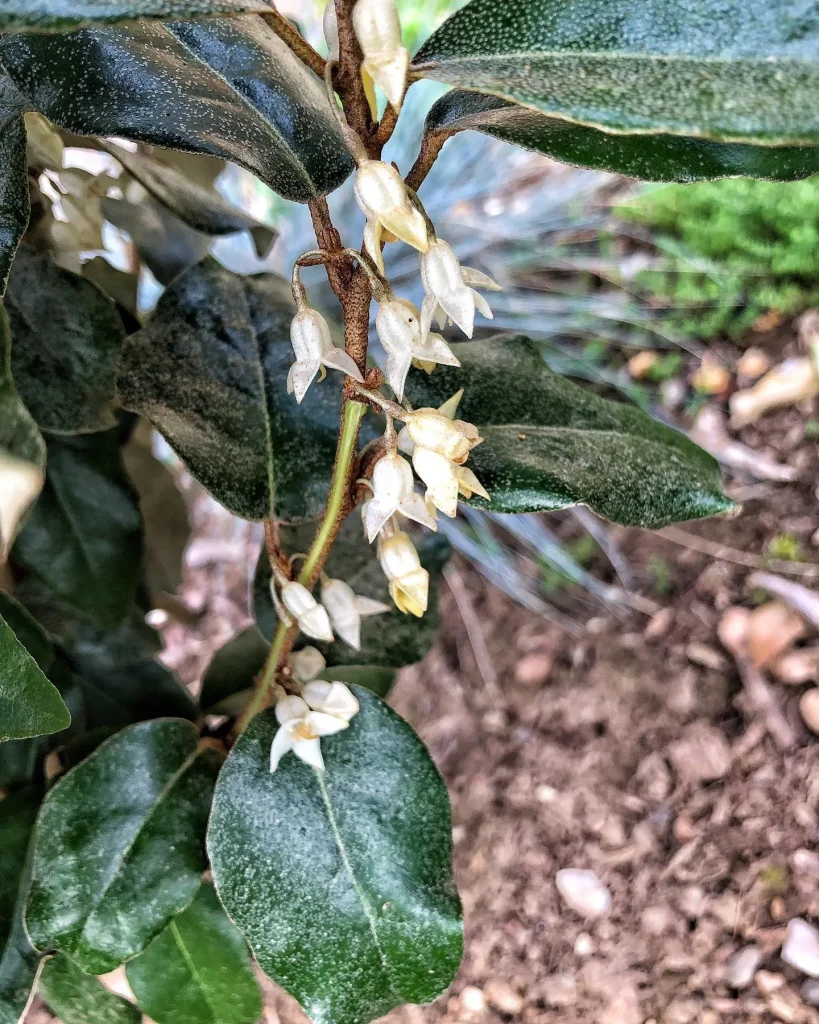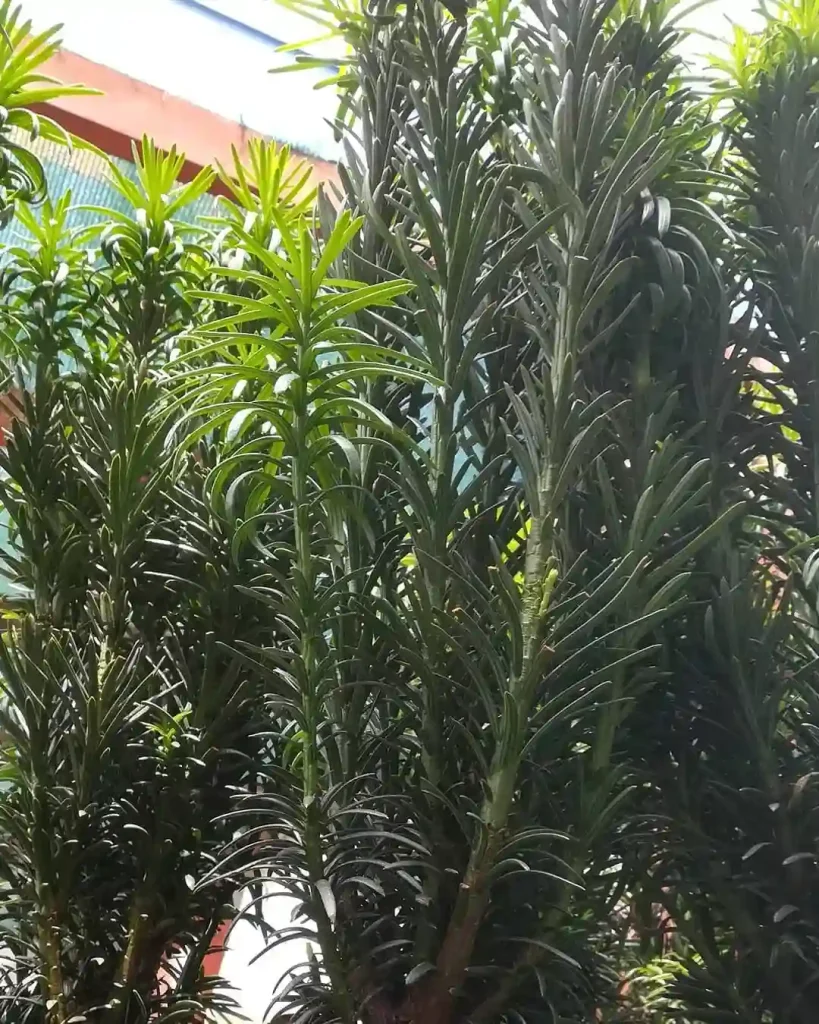
Melaleuca Trees: Friend or Foe? An Interview with Ferb Vu
Hi everyone, Ferb Vu here. Today, we’re diving deep into the world of Melaleuca trees from the Myrtaceae family. These often-misunderstood plants spark a lot of questions, so I’m here to address some of the most common ones.
Is the Melaleuca Tree the Same as the Tea Tree?
This is a common confusion. The Melaleuca genus encompasses over 200 species, with the most famous one being Melaleuca alternifolia, also known as the Tea Tree. This particular species is native to Australia and is the source of the popular tea tree oil used for its antibacterial properties.
However, the Melaleuca species causing problems in certain regions, particularly Florida, is typically Melaleuca quinquenervia, also called the Cajeput Tree. This invasive species disrupts native ecosystems and requires control measures.
So, Melaleuca Trees Are Bad?
It depends on the species and location. The Melaleuca alternifolia, or Tea Tree, is a valuable plant with medicinal uses. In its native Australia, Melaleuca quinquenervia plays a role in the ecosystem.
The problem arises when Melaleuca quinquenervia becomes invasive in places like Florida. It thrives in wet environments, outcompeting native plants and disrupting natural water flow. This can lead to a decline in biodiversity and impact wildlife habitats.
Melaleuca species
- Melaleuca acacioides F.Muell.
- Melaleuca accedens (Hawkeswood) Craven & R.D.Edwards
- Melaleuca acrifolia Craven & R.D.Edwards
- Melaleuca acuminata F.Muell.
- Melaleuca acutifolia (Benth.) Craven & Lepschi
- Melaleuca adenostyla K.J.Cowley
- Melaleuca adnata Turcz.
- Melaleuca aestiva (K.J.Brooks) Craven & R.D.Edwards
- Melaleuca aestuosa G.Forst.
- Melaleuca agathosmoides C.A.Gardner
- Melaleuca aglaia Craven & R.D.Edwards
- Melaleuca alilateralis Craven & R.D.Edwards
- Melaleuca alsophila A.Cunn. ex Benth.
- Melaleuca alternifolia (Maiden & Betche) Cheel
- Melaleuca amydra Craven
- Melaleuca anisandra (Schauer) Craven & R.D.Edwards
- Melaleuca apodocephala Turcz.
- Melaleuca apostiba K.J.Cowley
- Melaleuca aquilonia Craven & R.D.Edwards
- Melaleuca araucarioides Barlow
- Melaleuca arcana S.T.Blake
- Melaleuca arcuata (A.S.George) Craven & R.D.Edwards
- Melaleuca × arenicola S.Moore
- Melaleuca argentea W.Fitzg.
- Melaleuca arida (Hawkeswood) Craven & R.D.Edwards
- Melaleuca armillaris (Sol. ex Gaertn.) Sm.
- Melaleuca aspalathoides Schauer
- Melaleuca asterocarpa (Hnatiuk) Craven & R.D.Edwards
- Melaleuca atala (Hnatiuk) Craven & R.D.Edwards
- Melaleuca atroviridis Craven & Lepschi
- Melaleuca aurea (Turcz.) Craven & R.D.Edwards
- Melaleuca barlowii Craven
- Melaleuca basicephala Benth.
- Melaleuca beardii Craven
- Melaleuca beaufortioides (Benth.) Craven & R.D.Edwards
- Melaleuca biconvexa Byrnes
- Melaleuca bisulcata F.Muell.
- Melaleuca blackwelliana (Hnatiuk) Craven & R.D.Edwards
- Melaleuca blaeriifolia Turcz.
- Melaleuca blepharosperma (F.Muell.) Craven & R.D.Edwards
- Melaleuca boeophylla Craven
- Melaleuca borealis Craven
- Melaleuca brachyandra (Lindl.) Craven
- Melaleuca bracteata F.Muell.
- Melaleuca bracteosa Turcz.
- Melaleuca brevifolia Turcz.
- Melaleuca brevisepala (J.W.Dawson) Craven & J.W.Dawson
- Melaleuca bromelioides Barlow
- Melaleuca brongniartii Däniker
- Melaleuca brophyi Craven
- Melaleuca buseana (Guillaumin) Craven & J.W.Dawson
- Melaleuca caeca Craven
- Melaleuca cajuputi Maton & Sm. ex R.Powell
- Melaleuca calcicola (Barlow ex Craven) Craven & Lepschi
- Melaleuca calothamnoides F.Muell.
- Melaleuca calycina R.Br.
- Melaleuca calyptroides Craven
- Melaleuca campanae Craven
- Melaleuca camptoclada F.C.Quinn
- Melaleuca capitata Cheel
- Melaleuca cardiophylla F.Muell.
- Melaleuca caroli-huegelii Craven & R.D.Edwards
- Melaleuca carrii Craven
- Melaleuca cheelii C.T.White
- Melaleuca chisholmii (Cheel) Craven
- Melaleuca chrysantherea (F.Muell.) Craven & R.D.Edwards
- Melaleuca ciliosa Turcz.
- Melaleuca cinerea Craven & R.D.Edwards
- Melaleuca citrina (Curtis) Dum.Cours. Plant FAQs: Callistemon Citrinus – Lemon Bottlebrush – Melaleuca Citrina
- Melaleuca citrolens Barlow
- Melaleuca clarksonii Barlow
- Melaleuca clavifolia Craven
- Melaleuca cliffortioides Diels
- Melaleuca coccinea A.S.George
- Melaleuca × codonocarpa (Hnatiuk) Craven & R.D.Edwards
- Melaleuca comboynensis (Cheel) Craven
- Melaleuca comosa A.R.Bean
- Melaleuca concinna Turcz.
- Melaleuca concreta F.Muell.
- Melaleuca condylosa Craven
- Melaleuca conothamnoides C.A.Gardner
- Melaleuca cordata Turcz.
- Melaleuca cornucopiae Byrnes
- Melaleuca crispii Craven & R.D.Edwards
- Melaleuca crossota Craven & R.D.Edwards
- Melaleuca croxfordiae Craven
- Melaleuca ctenoides F.C.Quinn
- Melaleuca cucullata Turcz.
- Melaleuca cupularis (A.S.George) Craven & R.D.Edwards
- Melaleuca curtifolia Craven & R.D.Edwards
- Melaleuca cuspidata Turcz.
- Melaleuca cuticularis Labill.
- Melaleuca cyathifolia Craven & R.D.Edwards
- Melaleuca cyrtodonta Turcz.
- Melaleuca dawsonii Craven
- Melaleuca dealbata S.T.Blake
- Melaleuca deanei F.Muell.
- Melaleuca decora (Salisb.) Britten
- Melaleuca decussata R.Br.
- Melaleuca delta Craven
- Melaleuca dempta (Barlow) Craven
- Melaleuca dendroidea (Hnatiuk) Craven & R.D.Edwards
- Melaleuca densa R.Br.
- Melaleuca densispicata Byrnes
- Melaleuca depauperata Turcz.
- Melaleuca depressa Diels
- Melaleuca dichroma Craven & Lepschi
- Melaleuca diosmatifolia Dum.Cours.
- Melaleuca diosmifolia Andrews
- Melaleuca dissitiflora F.Muell.
- Melaleuca ebracteata (F.Muell.) Craven & R.D.Edwards
- Melaleuca ectadioclada (Hnatiuk) Craven & R.D.Edwards
- Melaleuca eleuterostachya F.Muell.
- Melaleuca elliptica Labill.
- Melaleuca empetrifolia Rchb.
- Melaleuca ericifolia Sm.
- Melaleuca eriocarpa (Lindl.) ined.
- Melaleuca eulobata Craven
- Melaleuca eurystoma Craven
- Melaleuca eximia (K.J.Cowley) Craven
- Melaleuca exuvia Craven & Lepschi
- Melaleuca fabri Craven
- Melaleuca faucicola Craven
- Melaleuca ferruginea Craven & Cowie
- Melaleuca filifolia F.Muell.
- Melaleuca fissurata Barlow
- Melaleuca flammea Craven
- Melaleuca flavovirens (Cheel) Craven
- Melaleuca fluviatilis Barlow
- Melaleuca foliolosa A.Cunn. ex Benth.
- Melaleuca formosa (S.T.Blake) Craven
- Melaleuca fulgens R.Br.
- Melaleuca gardneri Craven & R.D.Edwards
- Melaleuca genialis Lepschi
- Melaleuca georgei Craven & R.D.Edwards
- Melaleuca gibbosa Labill.
- Melaleuca gilesii (F.Muell.) Craven & R.D.Edwards
- Melaleuca glaberrima F.Muell.
- Melaleuca glabra (Benth.) Craven & R.D.Edwards
- Melaleuca glauca (DC.) Craven Plant FAQs: Callistemon Speciosus – Bottlebrush Tree – Melaleuca Glauca
- Melaleuca glena Craven
- Melaleuca globifera R.Br.
- Melaleuca glomerata F.Muell.
- Melaleuca glumacea Craven & R.D.Edwards
- Melaleuca gnidioides Brongn. & Gris
- Melaleuca gracilis (R.Br.) Craven & R.D.Edwards
- Melaleuca granitica (Hawkeswood) Craven & R.D.Edwards
- Melaleuca grieveana Craven
- Melaleuca groveana Cheel & C.T.White
- Melaleuca hadra (Hnatiuk) Craven & R.D.Edwards
- Melaleuca hakeifolia (Gaudich.) Craven & R.D.Edwards
- Melaleuca halmaturorum F.Muell. ex Miq.
- Melaleuca halophila Craven
- Melaleuca hamata Fielding & Gardner
- Melaleuca hamulosa Turcz.
- Melaleuca haplantha Barlow
- Melaleuca hawkeswoodii Craven & R.D.Edwards
- Melaleuca hemisticta S.T.Blake ex Craven
- Melaleuca hirsuta (Hawkeswood) Craven & R.D.Edwards
- Melaleuca hislopii Craven & R.D.Edwards
- Melaleuca hnatiukii Craven
- Melaleuca hollidayi Craven
- Melaleuca holosericea Schauer
- Melaleuca howeana Cheel
- Melaleuca huegelii Endl.
- Melaleuca huttensis Craven
- Melaleuca hypericifolia Sm.
- Melaleuca idana Craven
- Melaleuca incana R.Br.
- Melaleuca inops (Schauer) Craven & R.D.Edwards
- Melaleuca interioris Craven & Lepschi
- Melaleuca interstans (F.Muell.) Craven & R.D.Edwards
- Melaleuca irbyana R.T.Baker
- Melaleuca johnsonii Craven
- Melaleuca jonesii Craven & R.D.Edwards
- Melaleuca kalbarriensis (Hawkeswood) ined.
- Melaleuca keigheryi Craven
- Melaleuca kunzeoides Byrnes
- Melaleuca kybeliona Craven & R.D.Edwards
- Melaleuca lachnocephala Craven & R.D.Edwards
- Melaleuca laetifica Craven
- Melaleuca lanceolata Otto
- Melaleuca lara Craven
- Melaleuca lasiandra F.Muell.
- Melaleuca lateralis Turcz.
- Melaleuca lateriflora Benth.
- Melaleuca lateritia A.Dietr.
- Melaleuca laxiflora Turcz.
- Melaleuca lazaridis Craven
- Melaleuca lecanantha Barlow
- Melaleuca leiocarpa F.Muell.
- Melaleuca leiopyxis F.Muell. ex Benth.
- Melaleuca lepschii Craven & R.D.Edwards
- Melaleuca leptospermoides Schauer
- Melaleuca leucadendra (L.) L.
- Melaleuca leuropoma Craven
- Melaleuca linariifolia Sm.
- Melaleuca linearifolia (Link) Craven
- Melaleuca linearis Schrad. & J.C.Wendl.
- Melaleuca linguiformis Craven
- Melaleuca linophylla F.Muell.
- Melaleuca longissima (F.Muell.) Craven & R.D.Edwards
- Melaleuca longistaminea (F.Muell.) Barlow ex Craven
- Melaleuca lophantha (Vent.) ined.
- Melaleuca lophocoracorum A.J.Ford, Craven & Brophy
- Melaleuca lutea Craven
- Melaleuca macrocarpa (Hawkeswood) Craven & R.D.Edwards
- Melaleuca macronychia Turcz.
- Melaleuca macrostemon (Lindl.) Craven & R.D.Edwards
- Melaleuca manglesii Schauer
- Melaleuca marginata (Sond.) Hislop, Lepschi & Craven
- Melaleuca maxwellii (F.Muell.) Craven & R.D.Edwards
- Melaleuca megacephala F.Muell.
- Melaleuca megalongensis Craven & S.M.Douglas
- Melaleuca micrantha (Schauer) Craven & R.D.Edwards
- Melaleuca microcarpa (F.Muell.) Craven & R.D.Edwards
- Melaleuca micromera Schauer
- Melaleuca microphylla Sm.
- Melaleuca minutifolia F.Muell.
- Melaleuca monantha (Barlow) Craven
- Melaleuca montana (C.T.White ex S.T.Blake) Craven
- Melaleuca montis-zamia Craven
- Melaleuca × mulleola Craven & R.D.Edwards
- Melaleuca nanophylla Carrick
- Melaleuca nematophylla F.Muell. ex Craven
- Melaleuca nervosa (Lindl.) Cheel
- Melaleuca nesophila F.Muell. Plant FAQs: Melaleuca Nesophila
- Melaleuca nodosa (Sol. ex Gaertn.) Sm.
- Melaleuca oblivia A.R.Bean
- Melaleuca ochroma Lepschi
- Melaleuca oldfieldii F.Muell.
- Melaleuca orbicularis Craven
- Melaleuca orbifolia (F.Muell.) Craven & R.D.Edwards
- Melaleuca ordinifolia Barlow
- Melaleuca orophila Craven
- Melaleuca ostrina Craven & R.D.Edwards
- Melaleuca osullivanii Craven & Lepschi
- Melaleuca oxyphylla Carrick
- Melaleuca pachyphylla (Cheel) Craven
- Melaleuca pachystachya (Benth.) Craven & R.D.Edwards
- Melaleuca pallescens Byrnes
- Melaleuca pallida (Bonpl.) Craven
- Melaleuca paludicola Craven
- Melaleuca pancheri (Brongn. & Gris) Craven & J.W.Dawson
- Melaleuca papillosa Craven
- Melaleuca parviceps Lindl.
- Melaleuca parvistaminea Byrnes
- Melaleuca pauciflora Turcz.
- Melaleuca pauperiflora F.Muell.
- Melaleuca pearsonii (R.D.Spencer & Lumley) Craven
- Melaleuca penicula (K.J.Cowley) Craven
- Melaleuca pentagona Labill.
- Melaleuca peucophylla Craven & R.D.Edwards
- Melaleuca phellosa (A.S.George) Craven & R.D.Edwards
- Melaleuca phoenicea (Lindl.) Craven
- Melaleuca phoidophylla Barlow ex Craven
- Melaleuca phratra Craven
- Melaleuca pilosa (Lindl.) ined.
- Melaleuca pityoides (F.Muell.) Craven
- Melaleuca planifolia (Lehm.) Craven & R.D.Edwards
- Melaleuca platycalyx Diels
- Melaleuca plumea Craven
- Melaleuca plumosa (Turcz.) ined.
- Melaleuca podiocarpa Barlow ex Craven
- Melaleuca polandii (F.M.Bailey) Craven
- Melaleuca polycephala Benth.
- Melaleuca pomphostoma Barlow
- Melaleuca porphyrocephala (F.Muell.) Craven & R.D.Edwards
- Melaleuca preissiana Schauer
- Melaleuca preissii (Schauer) Craven & R.D.Edwards
- Melaleuca pritzelii (Domin) Barlow
- Melaleuca procera Craven
- Melaleuca propinqua S.Schauer
- Melaleuca protrusa Craven & Lepschi
- Melaleuca protumida Craven & R.D.Edwards
- Melaleuca psammophila Diels
- Melaleuca pulchella R.Br.
- Melaleuca pulcherrima Craven & R.D.Edwards
- Melaleuca pungens Schauer
- Melaleuca punicea Byrnes
- Melaleuca purpurea (Lindl.) Craven & R.D.Edwards
- Melaleuca pustulata Hook.f.
- Melaleuca pyramidalis Craven
- Melaleuca quadrifaria F.Muell.
- Melaleuca quadrifida (R.Br.) Craven & R.D.Edwards
- Melaleuca quercina Craven
- Melaleuca quinquenervia (Cav.) S.T.Blake
- Melaleuca radula Lindl.
- Melaleuca recurva (R.D.Spencer & Lumley) Craven
- Melaleuca relativa Craven & R.D.Edwards
- Melaleuca rhaphiophylla Schauer
- Melaleuca rigidifolia Turcz.
- Melaleuca ringens Barlow
- Melaleuca robusta (Schauer) Craven & R.D.Edwards
- Melaleuca rosea (A.S.George) Craven & R.D.Edwards
- Melaleuca rugulosa (Link) Craven
- Melaleuca rupestris (Schauer) Craven & R.D.Edwards
- Melaleuca ryeae Craven
- Melaleuca sabrina Craven
- Melaleuca saligna S.Schauer
- Melaleuca sapientes Craven
- Melaleuca scabra R.Br.
- Melaleuca scabrida (A.S.George) Craven & R.D.Edwards
- Melaleuca scalena Craven & Lepschi
- Melaleuca schaueri (Lehm.) Craven & R.D.Edwards
- Melaleuca sciotostyla Barlow
- Melaleuca scitula Craven & R.D.Edwards
- Melaleuca sclerophylla Diels
- Melaleuca sculponeata Barlow
- Melaleuca seriata Lindl.
- Melaleuca sericea Byrnes
- Melaleuca serpentina Craven
- Melaleuca sheathiana W.Fitzg.
- Melaleuca shiressii (Blakely) Craven
- Melaleuca sieberi S.Schauer
- Melaleuca similis Craven
- Melaleuca societatis Craven
- Melaleuca sophisma Lepschi
- Melaleuca sparsa (R.Br.) Craven & R.D.Edwards
- Melaleuca sparsiflora Turcz.
- Melaleuca spathulata Schauer
- Melaleuca spectabilis (Barlow ex Craven) Craven & Lepschi
- Melaleuca sphaerodendra Craven & J.W.Dawson
- Melaleuca spicigera S.Moore
- Melaleuca sprengelioides DC.
- Melaleuca squamea Labill.
- Melaleuca squamophloia (Byrnes) Craven
- Melaleuca squarrosa Donn ex Sm.
- Melaleuca stenostachya S.T.Blake
- Melaleuca stereophloia Craven
- Melaleuca stipitata Craven
- Melaleuca stramentosa Craven
- Melaleuca striata Labill.
- Melaleuca strobophylla Barlow
- Melaleuca styphelioides Sm.
- Melaleuca subalaris Barlow
- Melaleuca suberosa (Schauer) C.A.Gardner
- Melaleuca subfalcata Turcz.
- Melaleuca subtrigona Schauer
- Melaleuca subulata (Cheel) Craven
- Melaleuca sulcata (A.S.George) Craven & R.D.Edwards
- Melaleuca superba (Hawkeswood & Mollemans) Craven & R.D.Edwards
- Melaleuca sylvana Craven & A.J.Ford
- Melaleuca systena Craven
- Melaleuca tamariscina Hook.
- Melaleuca teretifolia Endl.
- Melaleuca teuthidoides Barlow
- Melaleuca thapsina Craven
- Melaleuca thymifolia Sm.
- Melaleuca thymoides Labill.
- Melaleuca thyoides Turcz.
- Melaleuca thysanota Craven & R.D.Edwards
- Melaleuca tinkeri Craven
- Melaleuca torquata Barlow
- Melaleuca tortifolia Byrnes
- Melaleuca torulosa (Schauer) Craven & R.D.Edwards
- Melaleuca transversa Craven & R.D.Edwards
- Melaleuca trichophylla Lindl.
- Melaleuca trichostachya Lindl.
- Melaleuca triumphalis Craven
- Melaleuca tuberculata Schauer
- Melaleuca tuberosa (Hawkeswood) Craven & R.D.Edwards
- Melaleuca ulicoides Craven & Lepschi
- Melaleuca uncinata R.Br.
- Melaleuca undulata Benth.
- Melaleuca urceolaris F.Muell. ex Benth.
- Melaleuca uxorum Craven, G.Holmes & Sankowsky
- Melaleuca valida (S.Moore) Craven & R.D.Edwards
- Melaleuca variegata Craven & R.D.Edwards
- Melaleuca velutina (Turcz.) Craven & R.D.Edwards
- Melaleuca venusta Craven
- Melaleuca villosisepala Craven
- Melaleuca viminalis (Sol. ex Gaertn.) Byrnes Plant FAQs: Callistemon Viminalis – Weeping Bottlebrush – Melaleuca Viminalis
- Melaleuca viminea Lindl.
- Melaleuca vinnula Craven & Lepschi
- Melaleuca violacea Schauer
- Melaleuca virens Craven
- Melaleuca viridiflora Sol. ex Gaertn.
- Melaleuca williamsii Craven
- Melaleuca wilsonii F.Muell.
- Melaleuca wimmerensis (Marriott & G.W.Carr) Craven
- Melaleuca wonganensis Craven
- Melaleuca xerophila Barlow
- Melaleuca zeteticorum Craven & Lepschi
- Melaleuca zonalis Craven
Melaleuca vs. Native Trees: What’s the Difference?
There are several key differences between Melaleuca quinquenervia and native Florida trees:
- Growth Rate: Melaleuca grows much faster than most native trees, allowing it to quickly dominate an area.
- Water Usage: Melaleuca trees are water guzzlers, potentially impacting water tables and wetlands.
- Fire Tolerance: Unlike many native trees, Melaleuca burns readily, increasing fire risk.
- Habitat Value: Native trees provide crucial food and shelter for a variety of wildlife species, whereas Melaleuca offers limited ecological benefits.
Can I Plant a Melaleuca Tree in My Yard?
It depends on where you live. Melaleuca quinquenervia is considered invasive in some regions, including Florida. Planting it can be illegal and harmful to the environment. Always check with your local authorities before planting any Melaleuca species.
If you’re looking for a beautiful tree for your landscape, consider native Florida options like Live Oak, Cypress, or Bald Cypress. These trees provide valuable shade, habitat, and aesthetic appeal while being well-adapted to the local environment.
How Do We Get Rid of Melaleuca Trees?
Eradicating Melaleuca completely is a challenge, but there are control methods. One approach involves using biological control agents, like Melaleuca weevils. These insects specifically target Melaleuca trees and help to reduce their populations.
Mechanical removal and prescribed burning can also be used in conjunction with biological control. However, these methods require expertise and careful planning to avoid unintended consequences.
The Future of Melaleuca Trees
Melaleuca quinquenervia presents a complex issue. While the Melaleuca alternifolia, or Tea Tree, offers valuable benefits, the invasive Melaleuca quinquenervia requires ongoing control efforts. Research into additional control methods and utilizing Melaleuca for biofuel or other purposes are areas of exploration.
Myth #1: All Melaleuca Trees are Invasive.
Busted: As mentioned earlier, the key lies in the species. Melaleuca alternifolia, the Tea Tree, is not invasive and offers medicinal benefits. The invasive culprit is Melaleuca quinquenervia.
Myth #2: Melaleuca Trees are Impossible to Kill.
Busted: While eradication might be a long-term goal, control methods exist. Biological control using Melaleuca weevils, combined with mechanical removal and prescribed burns by trained professionals, can effectively suppress Melaleuca populations.
Myth #3: Melaleuca Trees Have No Use.
Busted: The invasive Melaleuca quinquenervia might not be an ideal landscape tree, but research is exploring potential uses. Melaleuca biomass might hold promise for biofuel production or other industrial applications.
Myth #4: Melaleuca Control Efforts are Futile.
Busted: It’s true – complete eradication is challenging. However, ongoing control efforts can significantly reduce Melaleuca populations and prevent further ecological damage. These efforts protect native ecosystems and the biodiversity they support.
The Takeaway: Melaleuca trees present a complex situation. By understanding the differences between species, their ecological impact, and the ongoing control methods, we can work towards a balanced future. Responsible management and continued research are key to ensuring Melaleuca doesn’t overshadow the importance of protecting native habitats.
Let’s Get Technical (Optional):
For those interested in a deeper dive, here are some relevant scientific terms:
- Invasive Species: A non-native organism that disrupts the balance of a local ecosystem.
- Biological Control: Using natural enemies like insects to control unwanted populations.
- Prescribed Burning: Controlled burning of vegetation under specific conditions for ecological benefit.
- Biodiversity: The variety of life forms within a particular ecosystem.
By understanding the differences between species and the ecological impact of invasive Melaleuca, we can work towards a future where these trees are managed responsibly, and native ecosystems are protected.
Remember: Knowledge is power. If you suspect you have a Melaleuca tree on your property, contact your local forestry or environmental agency for guidance.
If i die, water my plants!



